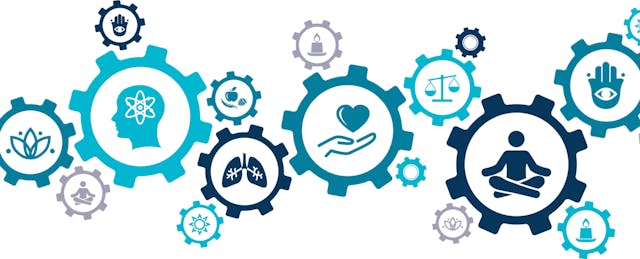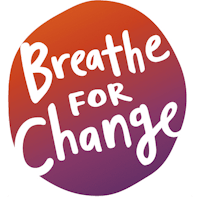In 2020, we have all taken big steps to prioritize each other’s wellness. We’ve temporarily closed schools and businesses and stayed home because our greatest wish is that our community stays healthy and safe. But well-being goes beyond physical health.
Even before COVID-19 upended teaching and learning, many teachers reported feeling extreme stress every day. In a time of unprecedented uncertainty and fear, our educators and students are now being forced to override their own personal struggles to demonstrate confidence and accountability for others. This is a recipe for trauma and burnout.
In my Ph.D. program, I studied the connection between educator well-being and student learning. The research clearly showed that if we do not prioritize teacher well-being we are directly deprioritizing student well-being and academic outcomes. The connection was so strong that it motivated me to start Breathe For Change to empower educators as champions of well-being in their lives, classrooms and school communities.
To improve social-emotional and academic outcomes for our students and communities, we have to embody and strengthen the social-emotional competencies within ourselves. In our digital 200-hour Wellness, SEL and Yoga Teacher Training and our Foundations Course, we focus on how social-emotional learning, mindfulness and yoga practices can be integrated to care for and strengthen the whole educator and, in turn, care for and strengthen the whole student.
Here are five strategies from our trainings to help you prioritize your own well-being—and that of your students—right now.
1) Set Your Intentions to Start the Day
Setting intentions is a powerful tool that keeps us focused on what matters most throughout the day. When you wake up, take a moment to ask yourself, “What is my intention for the day? How do I want to show up?” Focus more on how you want to be rather than what you want to do. For example, “My intention is to be kind and loving today.” or “I want to be focused and present.”
You can even choose one or two words that represent your intention so you can easily return to it when your mind inevitably wanders throughout the day. Or, write your intentions in a journal each morning, and use this sacred space as an opportunity to reflect on your growth.

2) Draw on the Breath as Your Anchor
The breath is our life force. The beauty is that we can access this inner resource at any moment to support our well-being. We can draw on the breath proactively, as a daily self-care practice (e.g., starting your day with a few minutes of breathing) or in response to a stressful situation in the moment. When we are stressed, anxious or upset, our bodies’ physiological response sends us into fight or flight mode, often with a shortening of the breath.
Taking Three Collective Breaths—or just a few moments to observe the natural flow of the breath—in the midst of challenging situations, or when you are feeling down, frustrated or stressed allows you to reset your perspective and can make a world of difference. Draw on simple practices, like Belly Breathing, in any situation, and encourage your students and children to do the same (with younger children, try “Bear Belly Breathing”—they love it!).

3) Check in and Share How You Are Feeling
When we bring awareness to our emotions, we create space to feel and accept ourselves exactly as we are. One of our favorite SEL*F practices used in thousands of classrooms across the country is the “Two Word Check In.” It’s simple. Bring your hands to your heart, connect to your breath, and notice how you are feeling. Choose two words to describe how you are feeling.
The simple act of bringing our attention to our emotions is mindfulness. When we become mindful of our present experience and needs, we are better equipped to respond with compassion, kindness and support. And when we acknowledge our emotions in community, a door opens to support one another.

4) Cultivate Compassion for Yourself and Others
Compassion—the ability to understand a person’s emotions and the desire to alleviate suffering—grounds us in our shared humanity and infuses our thoughts, words and actions with kindness. Cultivating self-compassion supports us in accepting ourselves exactly as we are and building a foundation for healing. Studies from Stanford University also reveal that kindness has a positive impact on physical health and can lead to improvements in our immune system and overall health.
Through practicing loving kindness—a meditation in which we send blessings of health, happiness and peace to ourselves and others—we enhance our capacity to stay emotionally connected even when we cannot be together physically.

5) Practice an Attitude of Gratitude
When we focus on what we are grateful for, our entire world shifts for the better. Gratitude has been shown to improve social, emotional, mental and physical well-being. Through practicing gratitude, we cultivate a mindset of abundance—and gain the capacity to shift our mindset to one that serves us. Practicing gratitude naturally puts us in a positive state of mind because it pushes us to focus on what is working, rather than what is not working.
By drawing our attention to what we appreciate—especially during challenging, uncertain and scary times—we gain the immediate benefits of letting go of thoughts that no longer serve us and welcoming in those that do. There are many ways to practice gratitude in your daily life. Here are a few of our favorites:
- Share three reasons you are grateful with a loved one every day, and invite them to share three reasons they are grateful with you—in person, or via text, phone or video.
- Facilitate an Appreciation Circle (one of Breathe For Change’s favorite SEL*F strategies) by opening up space for whoever feels called to express what they are grateful for in the moment.
- Acknowledge and appreciate yourself! Give the same love and care to yourself that you so naturally give to others. Draw on this Gratitude Self-Care Guide or our Grateful For Me SEL*F Lesson Plan for an extra dose of support!




